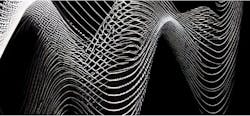Exploring Applications of Optical Polarization – Part 3
Introduction
Optical polarization is a phenomenon where light waves oscillate in a specific direction, leading to various applications across a wide range of fields. Understanding and controlling polarization has become a crucial aspect of modern technology, with applications that extend far beyond the realm of traditional optics. In this article, we will explore some deep applications of optical polarization, ranging from everyday objects like polarized sunglasses to advanced technologies like display screens, photography, radio communication, vision, and even angular momentum.
Polarized Sunglasses
One of the most common applications of optical polarization is in the design of polarized sunglasses. These sunglasses are equipped with lenses that have a special coating to selectively block certain polarizations of light. When sunlight reflects off surfaces such as water, roads, or car windshields, it becomes horizontally polarized. This horizontally polarized light can create glare, making it uncomfortable for the human eye. Polarized sunglasses work by blocking this horizontally polarized light, reducing glare and improving visibility. This not only enhances comfort but also improves safety, particularly for activities like driving and water sports.
Polarization in Optical Fiber Communication
Modern display technologies, such as liquid crystal displays (LCDs) and organic light-emitting diode displays (OLEDs), heavily rely on the control of polarization. Liquid crystals are used to modulate the polarization of light passing through the display, allowing for the precise control of each pixel’s brightness and color. By manipulating the orientation of liquid crystals using electric fields, displays can achieve high-resolution images with vibrant colors. Moreover, 3D displays utilize polarization to create the illusion of depth, as each eye perceives a slightly different image through polarized glasses.
While polarization is often associated with visible light, it plays a crucial role in radio communication as well. In radio waves, polarization refers to the orientation of the electromagnetic field. By controlling the polarization of radio waves, engineers can reduce interference and improve signal reception. For example, in satellite communication, circular polarization is commonly used. Circularly polarized signals are less susceptible to signal degradation caused by changes in the orientation of antennas, making them ideal for satellite links.
Polarization and Vision
Polarization is also an intriguing phenomenon in the field of vision. Some animals, such as certain species of cuttlefish and octopuses, can detect the polarization of light and use it for camouflage and communication. In humans, polarization can influence visual comfort and perception. For instance, glare from horizontally polarized light can be tiring and uncomfortable for the eyes, especially in snowy environments or on water. Understanding these visual aspects of polarization has led to the development of specialized eyewear and coatings to improve comfort and reduce visual fatigue in various situations.
Angular Momentum Using Circular Polarization
Circular polarization is a fascinating aspect of optical polarization that goes beyond everyday applications. Circularly polarized light consists of two components, one rotating clockwise and the other counterclockwise, with different angular momenta. This property has applications in advanced optical manipulation and communication. In the field of quantum optics, researchers use circularly polarized light to create quantum entanglement and perform experiments in quantum information processing. Additionally, circular polarization is used in optical tweezers, a technology that allows the manipulation and trapping of microscopic particles using the angular momentum of light.
Conclusion
Optical polarization is a versatile and fascinating phenomenon with a wide range of deep applications. From the everyday comfort provided by polarized sunglasses to the advanced technologies like displays and quantum optics, the control and understanding of polarization have revolutionized various fields. The ability to manipulate and exploit the polarization of light has not only improved the quality of life but also pushed the boundaries of science and technology, enabling new frontiers in research and innovation. As our knowledge of polarization deepens, we can expect even more exciting applications to emerge in the future.



